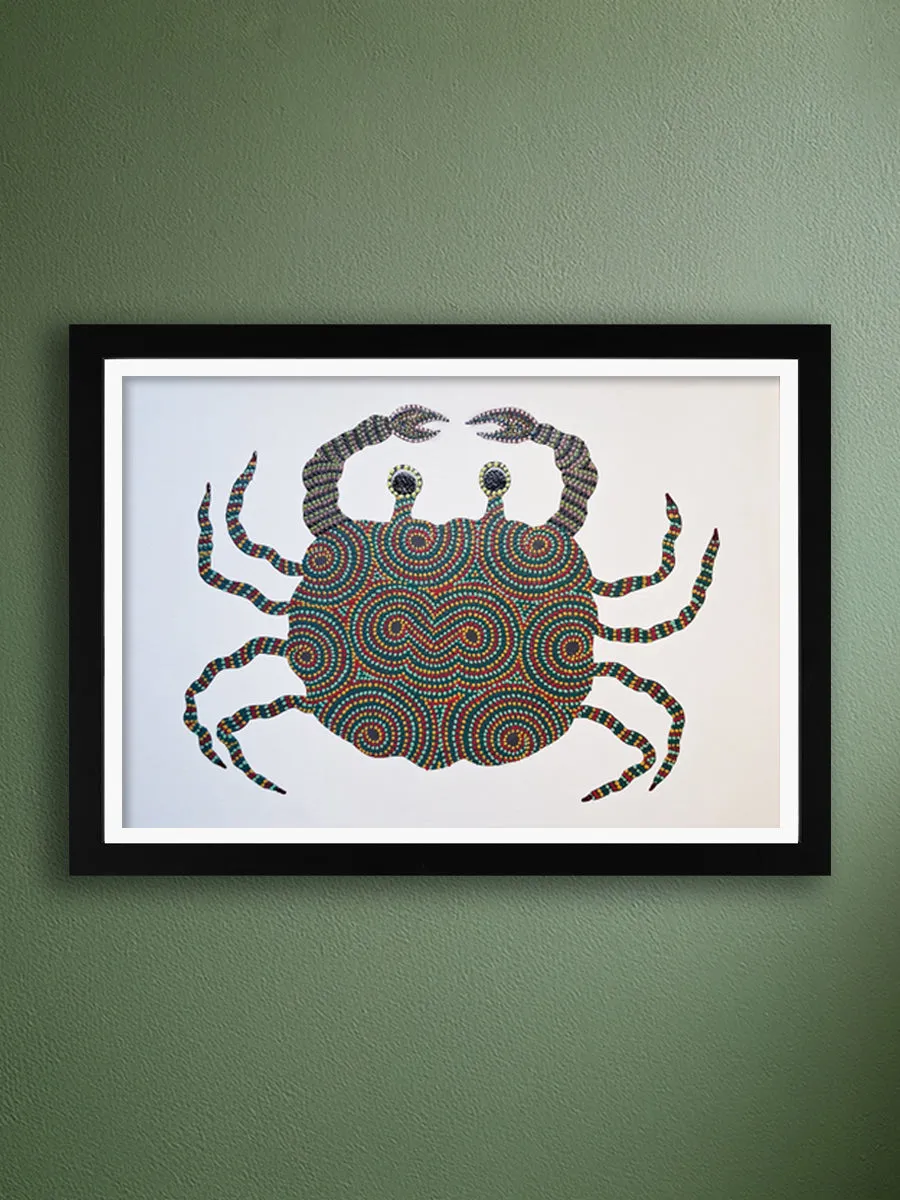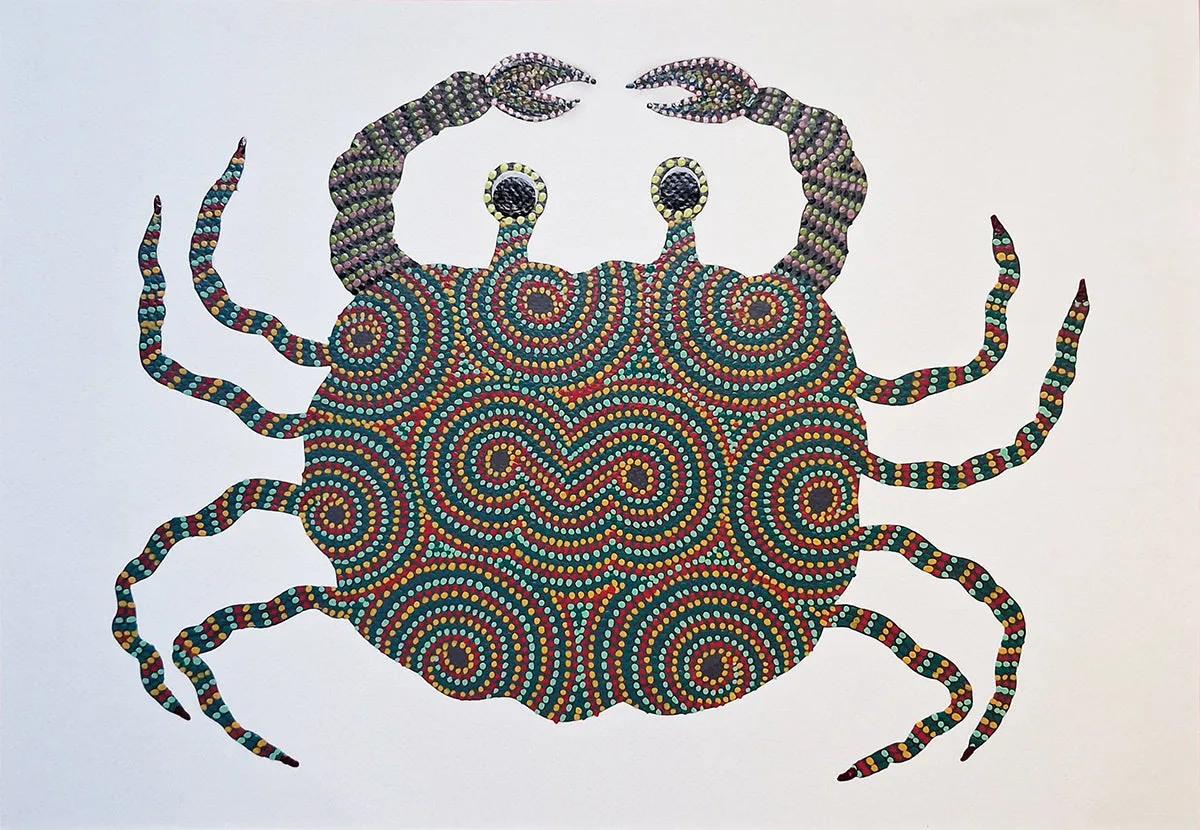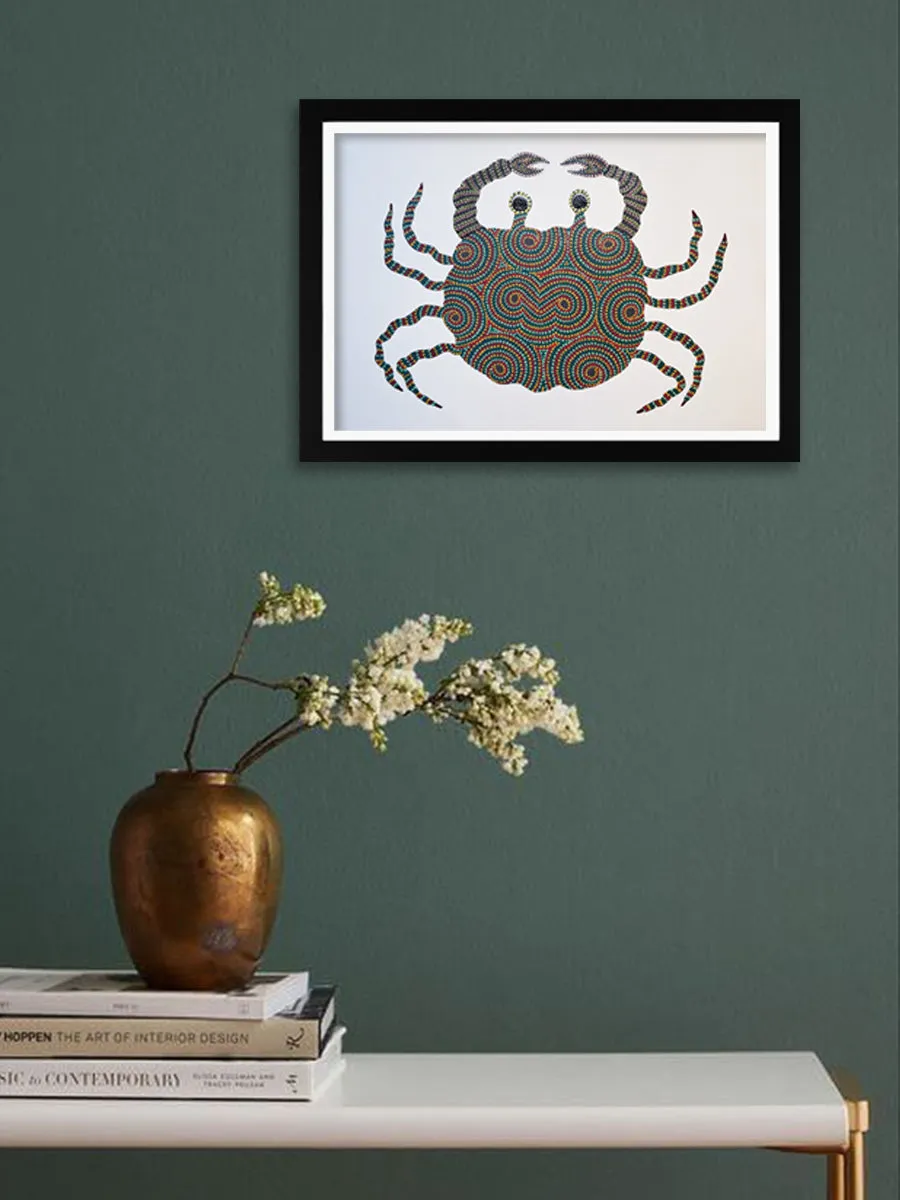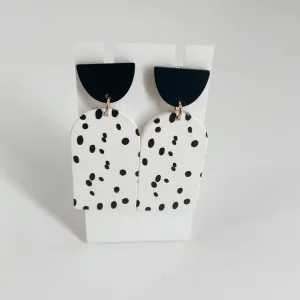Recognizable for its lively colors and the signature technique of infilling figures with dots, Bhil art offers a compelling glimpse into the cultural traditions of the Bhil community in India. Kamlesh Parmar's captivating Bhil painting brings a vibrant and intricate perspective to the form of a crab. The crustacean's body is a mesmerizing tapestry of concentric circles, each ring bursting with alternating hues of teal, deep teal, fiery red, and earthy mustard, creating a hypnotic visual rhythm across its carapace. These circular patterns evoke a sense of natural energy and the cyclical nature of life, characteristic of Bhil art. The crab's claws, extending upwards with a textured, almost braided appearance in shades of green, purple and black, culminate in meticulously detailed pincers, suggesting both strength and delicate precision. Its multiple legs, rendered with the same dotted technique but in a more elongated and sinuous fashion, reach outwards, hinting at movement and its connection to the aquatic environment. Two prominent eyes, adorned with striking blue centers and yellow outlines, gaze forward, adding a touch of alertness to the composition. The artist's skillful use of dots not only defines the crab's anatomy but also imbues it with a unique dynamism and a deep connection to the traditional artistic expression of the Bhil community.














![[WW36782] Veronica Beard | Knee Length Dress [WW36782] Veronica Beard | Knee Length Dress](https://www.ambientcarry.shop/image/ww36782-veronica-beard-knee-length-dress_6hCSuw_300x.webp)
